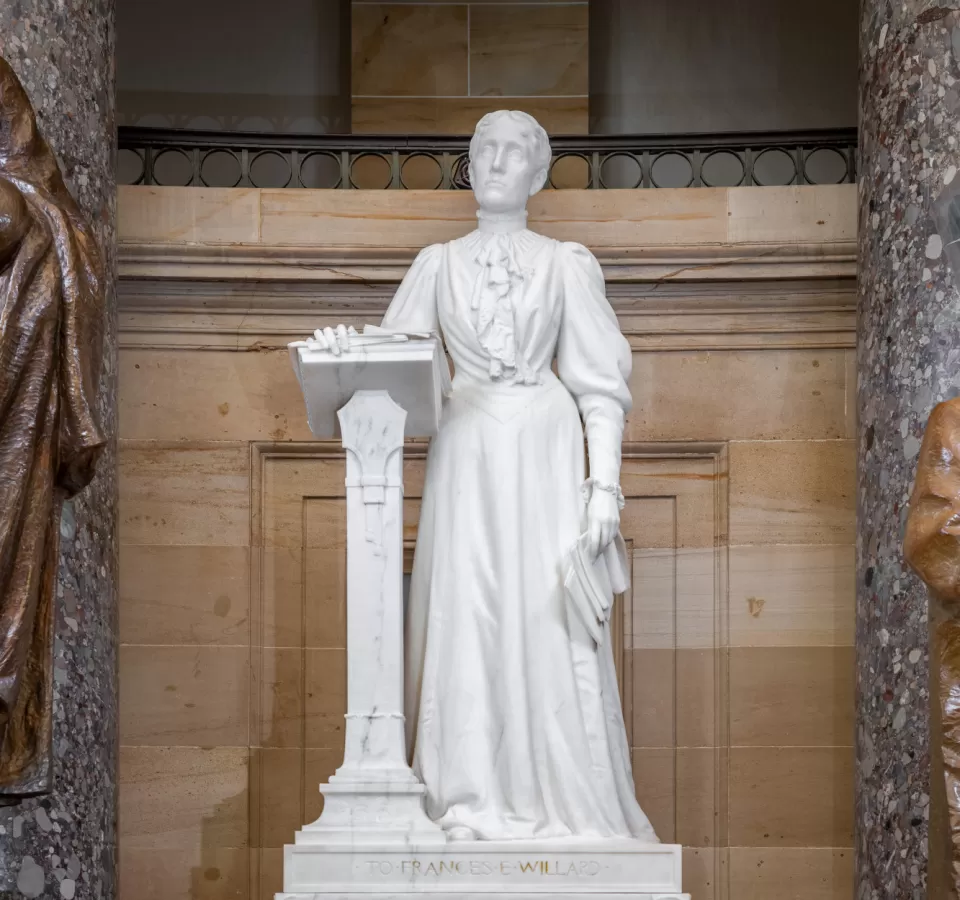The 2024 U.S. Capitol Christmas Tree will arrive Friday, 11/22. Lighting Ceremony 12/3. Details.
This statue of Frances Willard was given to the National Statuary Hall Collection by Illinois in 1905.
A pioneer in the temperance movement, Frances Elizabeth Caroline Willard is also remembered for her contributions to women's higher education and suffrage. Born on September 28, 1839, in Churchville, New York, she spent her childhood in Oberlin, Ohio, and later in Janesville, Wisconsin, where her father had purchased a large farm. She attended the Milwaukee Female College for one year and finished her college degree at North Western Female College in Evanston, Illinois.
Willard taught at Genesee Wesleyan Seminary in 1866–1867 and toured Europe and the Middle East from 1868 to 1870. She became president of the Evanston College for Women in 1871 and served until 1873. She was the first woman college president to confer degrees and, when the college merged with Northwestern University in 1873, she became the first Dean of Women.
Willard gained a reputation as an effective orator and social reformer. She became associated in the evangelist movement with Dwight Moody and was elected second president of the National Woman's Christian Temperance Union (WTCU) in 1879. Her zeal sustained her fight for prohibition, and she expanded the organization's focus to include women's rights issues, such as suffrage. In 1888, she was one of the founders of the National Council of Women and became its first president. In 1891, she became president of the World’s WCTU, an extension of the national organization.
Willard's health declined in the 1890s, affected by pernicious anemia. She died on February 17, 1898. Her statue was the first honoring a woman to be chosen for the National Statuary Hall Collection.
Podcast Episode: Women in Capitol Art
This podcast is part of the Shaping History: Women in Capitol Art series created by the U.S. Capitol Visitor Center. Listen below to hear about the women artists and women historical figures depicted in the art of the Capitol, including Helen Farnsworth Mears and Frances E. Willard.

